Thanks for joining us all at the Animaldome. With Group A underway this year's edition is already off to a flyer, with the Black Swallower holding a surprise lead in the early stages. Can the plucky lunatic keep up the pace?
Now onto Group B. Ladies and gentlemen, please consider the following...
Orca - https://en.wikipedia.org/wiki/Killer_whale

It's got killer in its name, which should make the annual nomination of Orca more or less a shoo-in. An apex predator that never finds itself on the menu, the Orca will merrily munch through an impressive list of marine mammals. However, these beasts are also clever. A captive killer whale discovered that by regurgitating its feed onto the water surface it could attract sea birds, which it subsequently ate. The other residents promptly saw this and copied the trick.
Sun Bear - https://en.wikipedia.org/wiki/Sun_bear
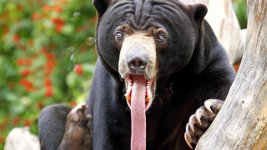
Don't be fooled by the teddy bear appearance. In the Kingdom of Hard the Sun Bear is a player. While not carnivorous, it has fearsome claws and a powerful bite that make it something you might want to consider avoiding. Sun bears are thought to be especially fierce when surprised and a past study of human casualties in India suggested that they tend not to mess around and go straight for your face. Approach with extreme caution.
Mantis Shrimp - https://en.wikipedia.org/wiki/Mantis_shrimp
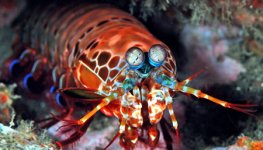
A previous WHC winner, the Mantis Shrimp shocked the world when it took the title. In recent times they have picked up the nickname 'thumb splitters' simply through their habit of lacerating incautious human investigators. They are generally aggressive in nature and only tend to venture out of the burrows for a scrap. Although there are many types of mantis shrimp they are largely divided into 'smashers' and 'spearers'. Basically they either bludgeon their prey or stab them. With ridiculous acceleration they can effectively attack twice, firstly with their claws and then with the resultant shock wave, which can be enough by itself to stun or kill. Whoosh!
Salt Water Crocodile - https://en.wikipedia.org/wiki/Saltwater_crocodile
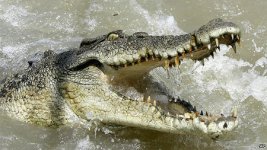
The 'saltie' is the largest of all living reptiles, generally reaching up to six metres in length and weighing just the one ton. The croc is defined as a hypercarnivore; meaning that over 70% of its diet consists of meat. It follows that the SWC should be pretty decent in a barney. The croc will ambush its prey, drown them and swallow them whole and can take on more or less anything that enters its territory. Oh yes, and they also have the highest bite force recorded in any animal: almost four times that of the Spotted Hyena.
Cape Buffalo - https://en.wikipedia.org/wiki/African_buffalo
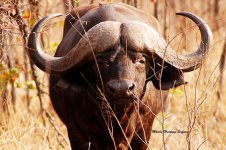
You don't get to be a proud member of The Big Five without having a degree of hardness about you. In the case of the Cape Buffalo most of that hard is concentrated at the head, with the horns fusing to form a 'bone shield' that does serious damage. Cape buffaloes are though to be responsible for goring around 200 people to death each year. A cursory search of YouTube should also uncover any number of documented punch ups with lions, crocodiles and more.
Slug - https://en.wikipedia.org/wiki/Slug

The slug is very much the outsider in this contest, it did muster some vociferous support in the nominations phase: possibly from irate gardeners. Anecdotal tales suggest that the West Sussex variety is nothing but mandibles and attitude, although this has yet to be confirmed independently. Slugs are given to eating plants faster than they can grow and once a gardener's ire has been aroused they have proven to be frustratingly resistant to pellets and those weird wool things. May well need a compelling case put forward if it is to progress further in the competition.
Colossal Squid - https://en.wikipedia.org/wiki/Colossal_squid
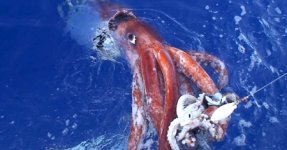
Giant squid? Nah, this dude is colossal and is the largest known invertebrate. It took one look at its titchy "giant" brethren and said 'I can do better than that'. Instead of tentacles with suckers and tiny teeth the Colossal Squid has upgraded and bears sharp hooks, some of which can swivel and others which are three pointed. It has eyes bigger than Alan Partridge's 'large dinner plate' and just screams epic. Scars found on sperm whales suggest that it can put up a very decent fight against this predator.
Elephant Seal - https://en.wikipedia.org/wiki/Elephant_seal

Here comes a creature that quite fancies a dust up with colossal squid. Following a near miss with extinction in the 19th century, elephant seals have since recovered in number. Southern bulls can typically reach up to 3,000kg and are unperturbed by the harsh environment they hang out in. They can dive over a mile in depth and for over an hour at a time. Their fights are extraordinarily vicious, bloody and not for the faint hearted. YouTube viewings should not be undertaken lightly.
Grasshopper Mouse - https://en.wikipedia.org/wiki/Grasshopper_mouse

A popular contender and surprise package from the past. Despite being... a mouse the grasshopper variety still has what it takes to go deep into WHC proceedings. Its cuddly appearance belies its carnivorous tendencies. The GM takes on toxic centipedes and scorpions, howls to let other mice know to keep the hell out of its territory and, if held captive with others of its kind, will contentedly eat them as a means of getting some peace and quiet. Well 'ard.
Hippopotamus - https://en.wikipedia.org/wiki/Hippopotamus

Despite being largely herbivorous and almost genial in appearance when feeding, the Hippo can be one evil brute. The third largest mammal on earth (behind elephants and rhinos) they are thought to be responsible for more human deaths in Africa than any other animal. Their huge size and surprising mobility in water make for an A Class attack sub: a hippos was reportedly responsible for the deaths of 13 people in Niger when it attacked a capsized a boat.
Go!
Now onto Group B. Ladies and gentlemen, please consider the following...
Orca - https://en.wikipedia.org/wiki/Killer_whale

It's got killer in its name, which should make the annual nomination of Orca more or less a shoo-in. An apex predator that never finds itself on the menu, the Orca will merrily munch through an impressive list of marine mammals. However, these beasts are also clever. A captive killer whale discovered that by regurgitating its feed onto the water surface it could attract sea birds, which it subsequently ate. The other residents promptly saw this and copied the trick.
Sun Bear - https://en.wikipedia.org/wiki/Sun_bear

Don't be fooled by the teddy bear appearance. In the Kingdom of Hard the Sun Bear is a player. While not carnivorous, it has fearsome claws and a powerful bite that make it something you might want to consider avoiding. Sun bears are thought to be especially fierce when surprised and a past study of human casualties in India suggested that they tend not to mess around and go straight for your face. Approach with extreme caution.
Mantis Shrimp - https://en.wikipedia.org/wiki/Mantis_shrimp

A previous WHC winner, the Mantis Shrimp shocked the world when it took the title. In recent times they have picked up the nickname 'thumb splitters' simply through their habit of lacerating incautious human investigators. They are generally aggressive in nature and only tend to venture out of the burrows for a scrap. Although there are many types of mantis shrimp they are largely divided into 'smashers' and 'spearers'. Basically they either bludgeon their prey or stab them. With ridiculous acceleration they can effectively attack twice, firstly with their claws and then with the resultant shock wave, which can be enough by itself to stun or kill. Whoosh!
Salt Water Crocodile - https://en.wikipedia.org/wiki/Saltwater_crocodile

The 'saltie' is the largest of all living reptiles, generally reaching up to six metres in length and weighing just the one ton. The croc is defined as a hypercarnivore; meaning that over 70% of its diet consists of meat. It follows that the SWC should be pretty decent in a barney. The croc will ambush its prey, drown them and swallow them whole and can take on more or less anything that enters its territory. Oh yes, and they also have the highest bite force recorded in any animal: almost four times that of the Spotted Hyena.
Cape Buffalo - https://en.wikipedia.org/wiki/African_buffalo

You don't get to be a proud member of The Big Five without having a degree of hardness about you. In the case of the Cape Buffalo most of that hard is concentrated at the head, with the horns fusing to form a 'bone shield' that does serious damage. Cape buffaloes are though to be responsible for goring around 200 people to death each year. A cursory search of YouTube should also uncover any number of documented punch ups with lions, crocodiles and more.
Slug - https://en.wikipedia.org/wiki/Slug

The slug is very much the outsider in this contest, it did muster some vociferous support in the nominations phase: possibly from irate gardeners. Anecdotal tales suggest that the West Sussex variety is nothing but mandibles and attitude, although this has yet to be confirmed independently. Slugs are given to eating plants faster than they can grow and once a gardener's ire has been aroused they have proven to be frustratingly resistant to pellets and those weird wool things. May well need a compelling case put forward if it is to progress further in the competition.
Colossal Squid - https://en.wikipedia.org/wiki/Colossal_squid

Giant squid? Nah, this dude is colossal and is the largest known invertebrate. It took one look at its titchy "giant" brethren and said 'I can do better than that'. Instead of tentacles with suckers and tiny teeth the Colossal Squid has upgraded and bears sharp hooks, some of which can swivel and others which are three pointed. It has eyes bigger than Alan Partridge's 'large dinner plate' and just screams epic. Scars found on sperm whales suggest that it can put up a very decent fight against this predator.
Elephant Seal - https://en.wikipedia.org/wiki/Elephant_seal

Here comes a creature that quite fancies a dust up with colossal squid. Following a near miss with extinction in the 19th century, elephant seals have since recovered in number. Southern bulls can typically reach up to 3,000kg and are unperturbed by the harsh environment they hang out in. They can dive over a mile in depth and for over an hour at a time. Their fights are extraordinarily vicious, bloody and not for the faint hearted. YouTube viewings should not be undertaken lightly.
Grasshopper Mouse - https://en.wikipedia.org/wiki/Grasshopper_mouse

A popular contender and surprise package from the past. Despite being... a mouse the grasshopper variety still has what it takes to go deep into WHC proceedings. Its cuddly appearance belies its carnivorous tendencies. The GM takes on toxic centipedes and scorpions, howls to let other mice know to keep the hell out of its territory and, if held captive with others of its kind, will contentedly eat them as a means of getting some peace and quiet. Well 'ard.
Hippopotamus - https://en.wikipedia.org/wiki/Hippopotamus

Despite being largely herbivorous and almost genial in appearance when feeding, the Hippo can be one evil brute. The third largest mammal on earth (behind elephants and rhinos) they are thought to be responsible for more human deaths in Africa than any other animal. Their huge size and surprising mobility in water make for an A Class attack sub: a hippos was reportedly responsible for the deaths of 13 people in Niger when it attacked a capsized a boat.
Go!

